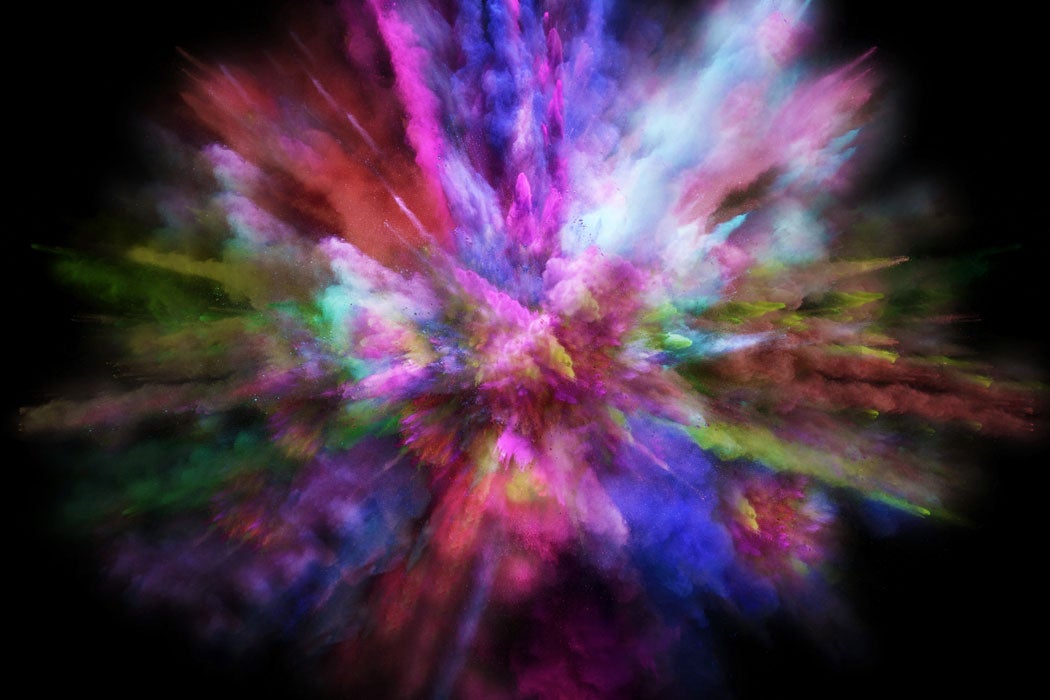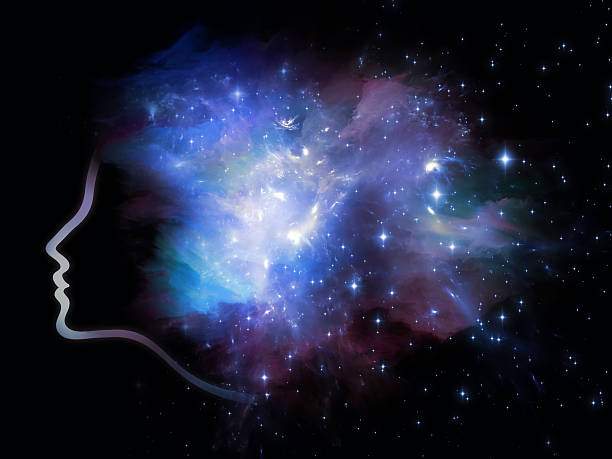Imagine living in a world where colors are not just seen but tasted, where numbers have personalities, where every musical note bursts into a shower of vivid colors across the mind’s eye. For people with synesthesia, this is not imagination—it is daily reality. Their senses, instead of operating in neat, separate channels, cross and intertwine, producing experiences that most of us can scarcely fathom.
Synesthesia, from the Greek words syn (“together”) and aisthesis (“sensation”), describes a phenomenon in which stimulation of one sense automatically triggers perceptions in another. To a synesthete, a letter may glow with color, a voice may sparkle with texture, or a smell may unfurl as a shape. What others consider a metaphor—“loud colors,” “sweet sounds,” “bitter cold”—is, for them, literal truth.
For centuries, synesthesia was dismissed as eccentricity, imagination, or even madness. Today, science views it as a window into the hidden architecture of the brain, revealing how perception is constructed, how senses intertwine, and perhaps even how creativity flourishes. To understand synesthesia is to glimpse the vast, uncharted potential of the human mind.
The First Glimpses of a Hidden Phenomenon
Though synesthesia has likely existed throughout human history, it first entered the realm of documented science in the nineteenth century. In 1812, the German physician Georg Tobias Ludwig Sachs published one of the earliest medical descriptions of people who experienced colors when hearing musical tones. Over the decades, artists, musicians, and scientists alike began reporting similar phenomena.
The composer Franz Liszt famously demanded that his orchestra “play more pink” or “less green,” leaving musicians baffled but hinting at a sensory world invisible to them. Russian novelist Vladimir Nabokov described how each letter of the alphabet had its own hue; his wife and son, interestingly, shared similar associations, suggesting a familial link. The artist Wassily Kandinsky transformed his synesthetic experiences into bold, colorful canvases that aimed to capture the music of sight.
Despite these reports, synesthesia remained a curiosity on the margins of science. Psychologists often dismissed it as metaphorical language, poetic exaggeration, or even attention-seeking behavior. Only in the late twentieth century, with advances in neuroscience, did synesthesia step into the spotlight as a genuine, measurable phenomenon. Researchers discovered that synesthetic experiences were not imaginary but consistent, testable, and deeply rooted in brain function.
What Synesthesia Feels Like
To grasp synesthesia, it helps to imagine yourself inside the mind of a synesthete. Consider grapheme-color synesthesia, one of the most common forms. For a person with this condition, every letter and number is colored with a specific, unchanging hue. To them, the word “apple” might shimmer in shades of green and red, while “sunset” glows with purple and gold. These associations are involuntary and automatic; the colors are simply there, as real as the letters themselves.
Another form, chromesthesia, links sound to color. A synesthete may hear a trumpet and instantly see a burst of yellow sparks, or listen to a violin and watch waves of deep blue ripple across the mind. These visions are not imagination but perception, woven seamlessly into their sensory world.
There are rarer, even stranger forms. Some people taste flavors when hearing words, so that a friend’s name may evoke chocolate or garlic. Others feel touch when seeing someone else being touched, a form of mirror-touch synesthesia that blurs the boundary between self and other. There are even individuals who experience entire personalities attached to numbers or days of the week, as though the calendar itself had a cast of characters.
What unites these diverse forms is the immediacy and involuntariness of the experiences. Synesthetes do not choose these sensations; they arrive unbidden, vivid, and consistent across time. To them, the world is layered with textures most of us cannot sense, like a hidden dimension woven into reality.
The Neuroscience of Crossed Wires
The central mystery of synesthesia is how the brain produces such experiences. Neuroscience has revealed that synesthesia is not a trick of imagination but a reflection of genuine neural wiring. The brain is composed of specialized regions, each devoted to processing different sensory inputs—vision, hearing, taste, touch, and smell. Normally, these regions communicate in controlled ways, but in synesthetes, the boundaries appear more porous.
One leading hypothesis is the “cross-activation theory.” In this model, neighboring brain regions responsible for different senses are unusually interconnected. For example, in grapheme-color synesthesia, the brain area that processes visual recognition of letters and numbers lies adjacent to the color-processing area in the fusiform gyrus. In synesthetes, excess neural connections may allow activity in one region to spill into the other, so that recognizing a letter automatically activates the experience of color.
Another hypothesis is the “disinhibited feedback theory.” Instead of extra connections, this theory suggests that all brains have potential cross-talk between sensory regions, but in most people these signals are suppressed. In synesthetes, the inhibition is weaker, allowing sensory signals to leak across boundaries. This would explain why certain psychedelic drugs, like LSD or psilocybin, can temporarily induce synesthesia-like experiences in non-synesthetes by reducing sensory inhibition.
Brain imaging studies provide support for both views. Functional MRI scans show that when synesthetes perceive letters or sounds, not only do the expected brain regions activate, but so do additional sensory areas corresponding to their synesthetic experiences. This means the colors, tastes, or shapes they report are not figments of imagination but real perceptions, produced by genuine neural activity.
The Genetics of Blended Perception
Synesthesia often runs in families, suggesting a genetic basis. Studies of twins show higher rates of shared synesthesia in identical twins than in fraternal ones. Though no single “synesthesia gene” has been identified, researchers believe multiple genes may contribute by influencing brain connectivity during development.
Children with synesthesia often report their unusual perceptions from an early age, sometimes before they even realize others do not experience the world the same way. Parents may first notice when their child insists that a letter has the wrong color in a book or that a number feels “angry” instead of “friendly.” These consistent, idiosyncratic perceptions reveal the deeply rooted nature of synesthesia in the brain.
Interestingly, synesthesia is more common than once thought. Estimates suggest that between 2% and 4% of the population may experience some form of it. Yet because it is not disabling—indeed, many synesthetes cherish their abilities—most never come to medical attention. Instead, synesthesia often hides in plain sight, quietly shaping the lives of millions.
Synesthesia and Creativity
The connection between synesthesia and creativity has long fascinated scientists and artists alike. Many famous creators have reported synesthetic experiences. The painter David Hockney described seeing musical notes as colors; the musician Pharrell Williams speaks of chords as shimmering textures; the poet Arthur Rimbaud famously wrote of vowels as colors.
Why might synesthesia fuel creativity? One possibility is that by linking senses in unusual ways, the synesthetic brain fosters metaphorical thinking and novel associations. Where others see a boundary, synesthetes experience a bridge. This cognitive flexibility may help explain their frequent presence in artistic and musical circles.
Neuroscientists also note that synesthetes often excel in memory tasks. Associating colors, shapes, or personalities with abstract information provides additional cues for recall. Nabokov’s lifelong obsession with letters and colors may have fueled his remarkable linguistic precision, while composers with chromesthesia may find inspiration in the literal blending of sound and sight.
Synesthesia, Perception, and Reality
Studying synesthesia not only reveals the quirks of certain brains but also raises profound questions about perception itself. If two people can look at the same word and one sees plain letters while the other sees radiant colors, what does that say about the nature of reality?
Perception has never been a passive recording of the world. It is an active construction, shaped by the brain’s architecture and expectations. Synesthesia reminds us that reality is filtered through the neural wiring of each individual. For most, the senses remain distinct; for synesthetes, they blend. Neither experience is more “true”—both are products of the brain’s attempt to make sense of the world.
Some philosophers suggest that synesthesia offers a glimpse into how the infant brain may once have perceived. In early development, before sensory pathways are fully segregated, babies may experience a synesthesia-like blending of perception. As the brain matures, these connections are pruned away, leaving distinct senses. In synesthetes, perhaps some of these early connections persist, granting access to a form of perception most of us have lost.
Synesthesia Induced and Artificial
While true synesthesia is usually lifelong and stable, certain conditions can induce temporary synesthesia-like experiences. Psychedelic drugs are the most famous example. Users of LSD, psilocybin, or mescaline often report hearing colors, tasting sounds, or seeing music as vibrant patterns. These states support the theory that synesthesia may emerge when the brain’s normal sensory boundaries are loosened.
Brain injury, sensory deprivation, or epilepsy can also sometimes trigger synesthetic experiences. In these cases, the brain may compensate for lost input by recruiting other sensory pathways, creating cross-wired perceptions. This plasticity highlights the brain’s remarkable adaptability and raises the possibility that synesthesia is not a quirk limited to a few but a latent capacity in us all.
Modern technology is even exploring the deliberate creation of synesthetic experiences. Artists and engineers are developing “sensory substitution” devices that translate one sense into another—such as converting sound into vibrations or visual patterns for the blind. While not identical to true synesthesia, such tools may tap into the brain’s ability to integrate sensory input in novel ways.
Living With Synesthesia
For most synesthetes, their condition is not a disorder but a gift. Many describe it as enriching their lives, making language, music, or numbers more vibrant and meaningful. Colors attached to words may help with spelling; sounds linked to tastes may make music deliciously memorable.
Yet synesthesia can also be distracting. A child who insists that a math problem feels “wrong” because the numbers’ personalities do not get along may struggle to explain themselves to teachers. A musician overwhelmed by a cacophony of colors may find it difficult to focus on the notes themselves. Still, most synesthetes would not trade their perceptions for ordinary senses. They view their condition not as an abnormality but as a different way of being.
Some even use their synesthesia deliberately in daily life. For instance, grapheme-color synesthetes may rely on their color associations to quickly recognize phone numbers or memorize sequences. Chromesthetes may compose music guided by the palette of colors they wish to evoke. The blending of senses becomes a tool as much as a curiosity.
The Future of Synesthesia Research
As neuroscience advances, synesthesia continues to intrigue researchers. What can it reveal about how the brain integrates information? Can it inspire new approaches to education, art, or technology? Might understanding synesthesia even illuminate the roots of consciousness itself?
One promising direction is the study of brain connectivity. High-resolution imaging is beginning to map the networks that allow synesthesia to flourish. By comparing synesthetes to non-synesthetes, scientists hope to uncover the fundamental principles of how sensory systems communicate.
Another area of interest is artificial intelligence. By modeling how the brain blends information across senses, AI researchers aim to create machines capable of richer, more human-like perception. Synesthesia may serve as a natural example of multisensory integration, guiding the design of future technologies.
Ultimately, synesthesia challenges our assumptions about the limits of perception. It suggests that the senses are not fixed compartments but flexible dimensions of experience, capable of blending, merging, and evolving. In this light, synesthesia is not an oddity but a testament to the brain’s creativity and plasticity.
A Symphony of the Mind
To understand synesthesia is to expand our sense of what it means to be human. It reminds us that perception is not a single, shared reality but a spectrum of possible worlds, each shaped by the wiring of the brain. For some, a letter is just a letter; for others, it glows with indigo light. For some, music is sound; for others, it is a fireworks display of colors and shapes.
These experiences, far from being flaws, enrich the human tapestry. They fuel art, inspire science, and deepen our wonder at the mysteries of the mind. Synesthesia shows us that reality is not flat but layered, not uniform but kaleidoscopic. And in that kaleidoscope, we glimpse the infinite potential of perception.
Albert Einstein once said that imagination is more important than knowledge. Synesthesia, with its fusion of senses, is imagination made real, a living metaphor turned into perception. It is the poetry of the brain written directly into sensation.
In the end, the science of synesthesia is more than the study of crossed wires. It is the study of possibility—the possibility that our minds hold hidden dimensions, that the boundaries of perception are fluid, and that reality itself is far richer than we ever dared to believe.






